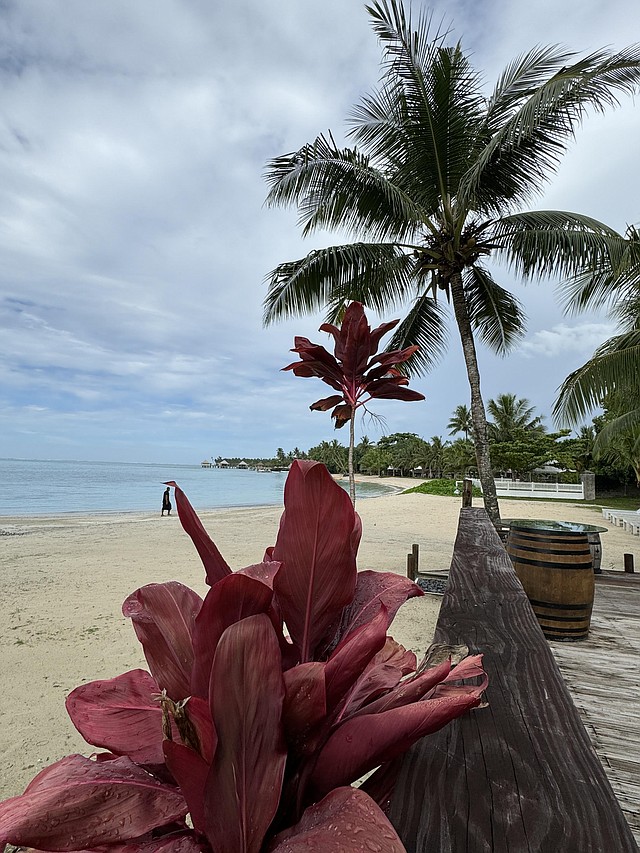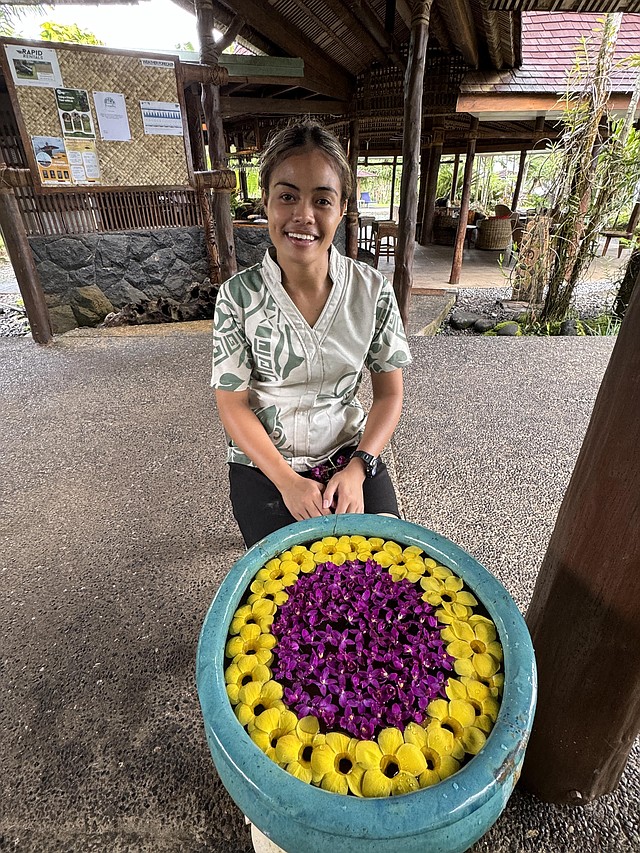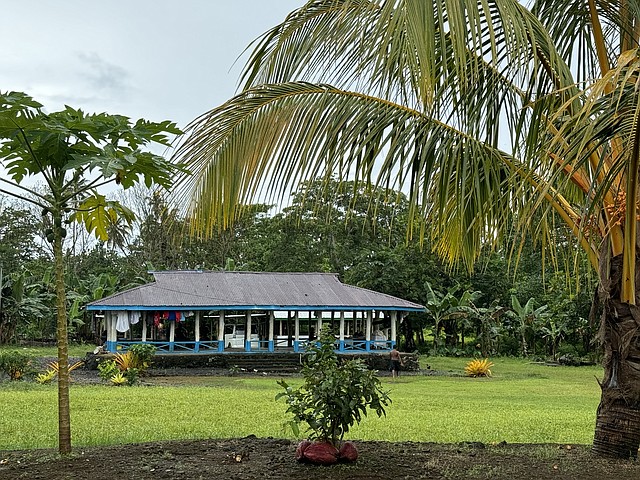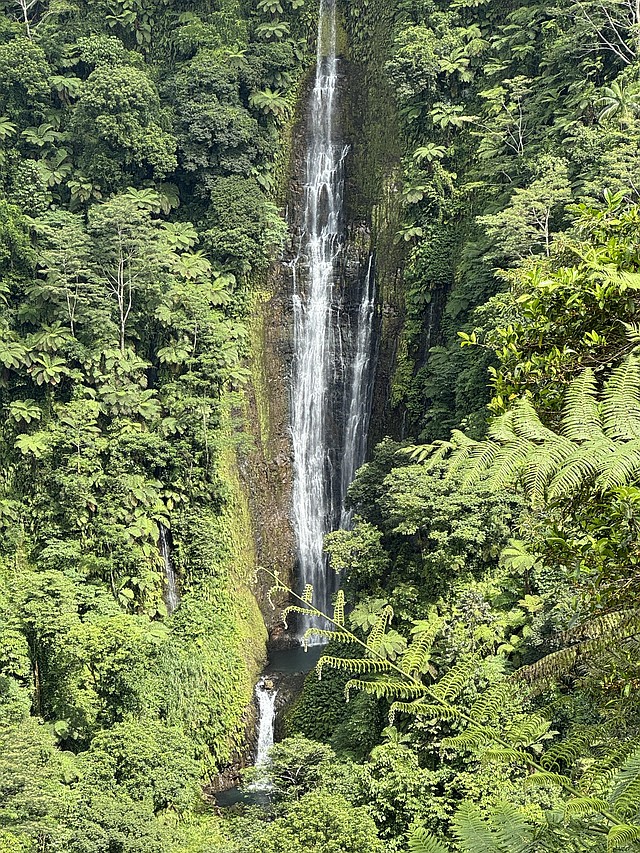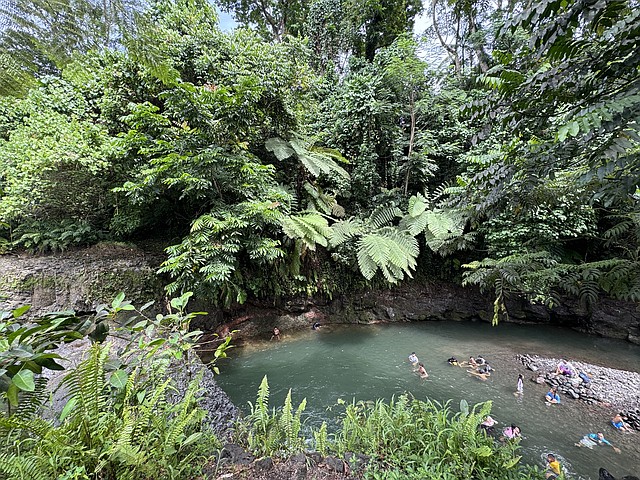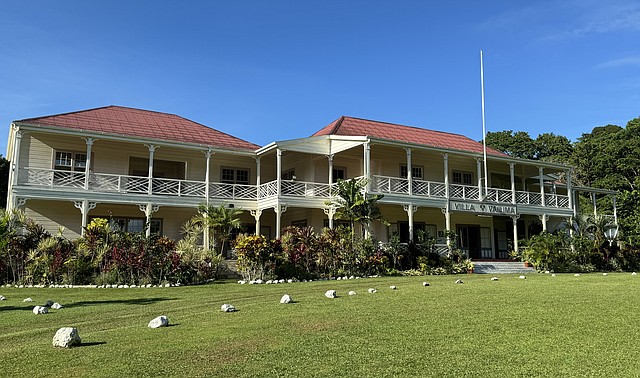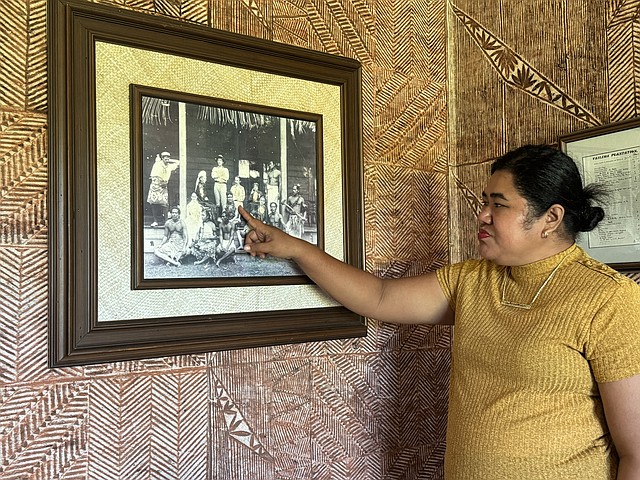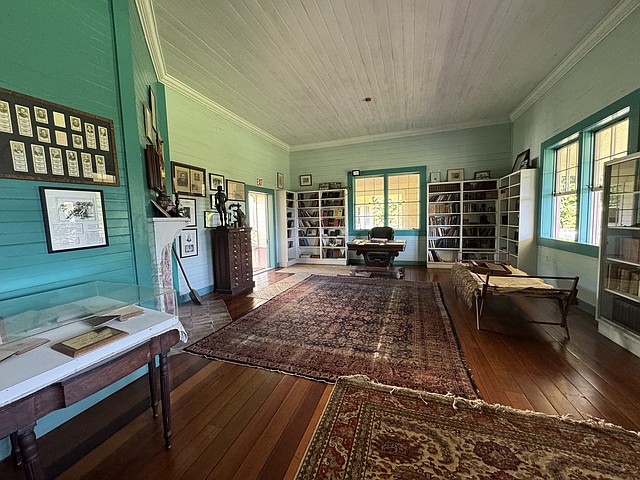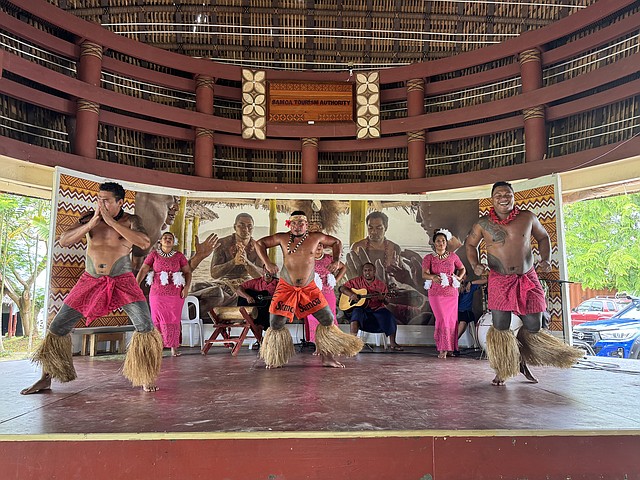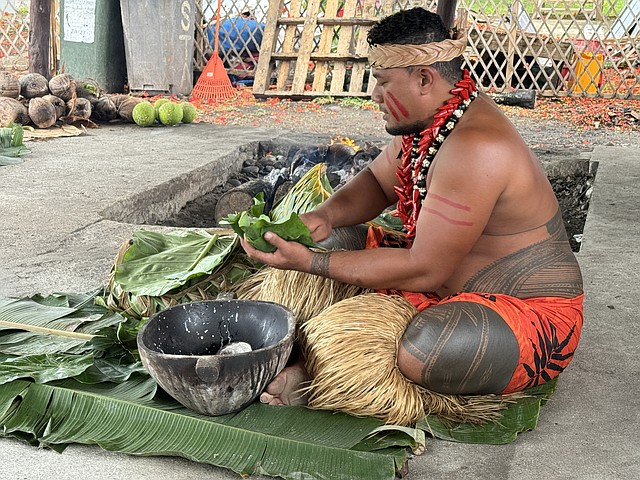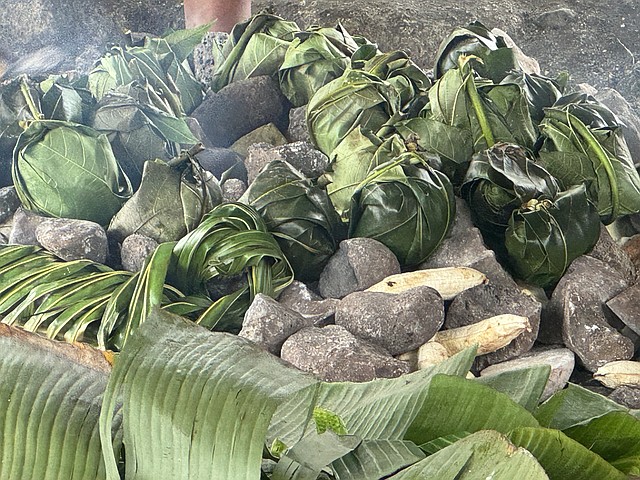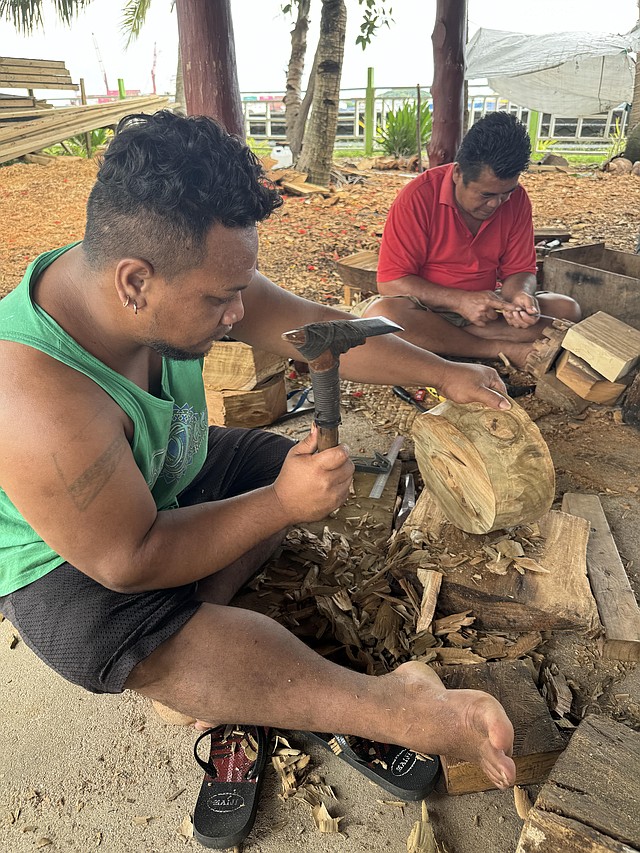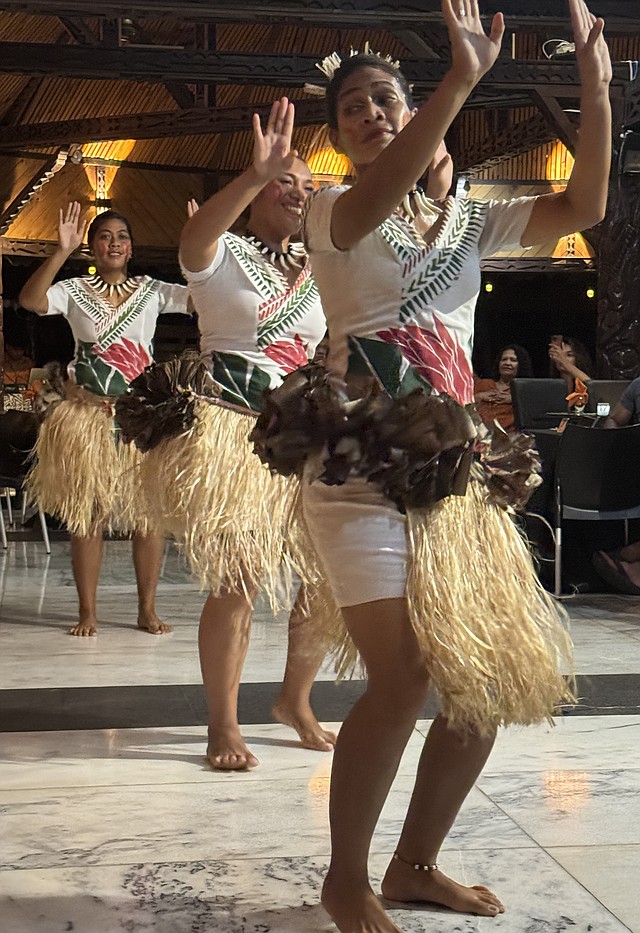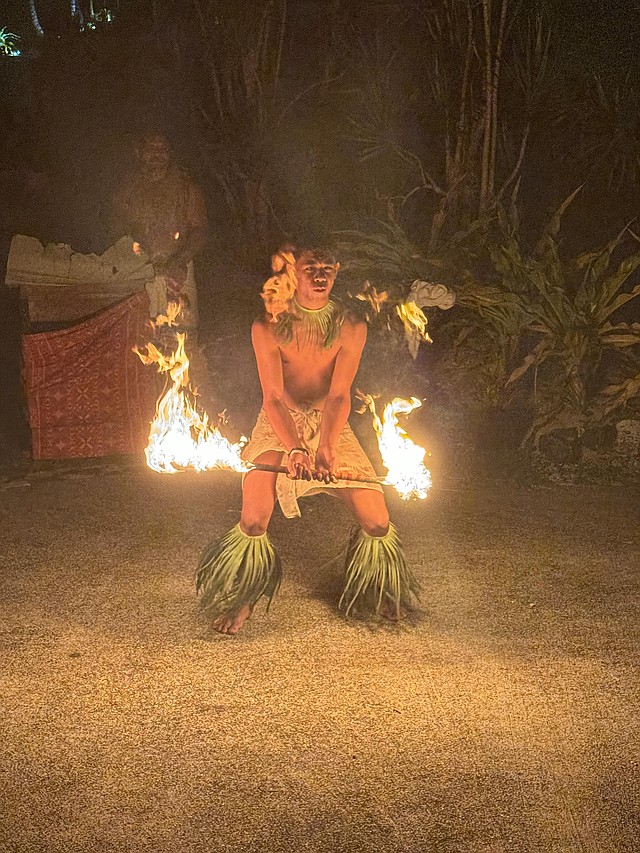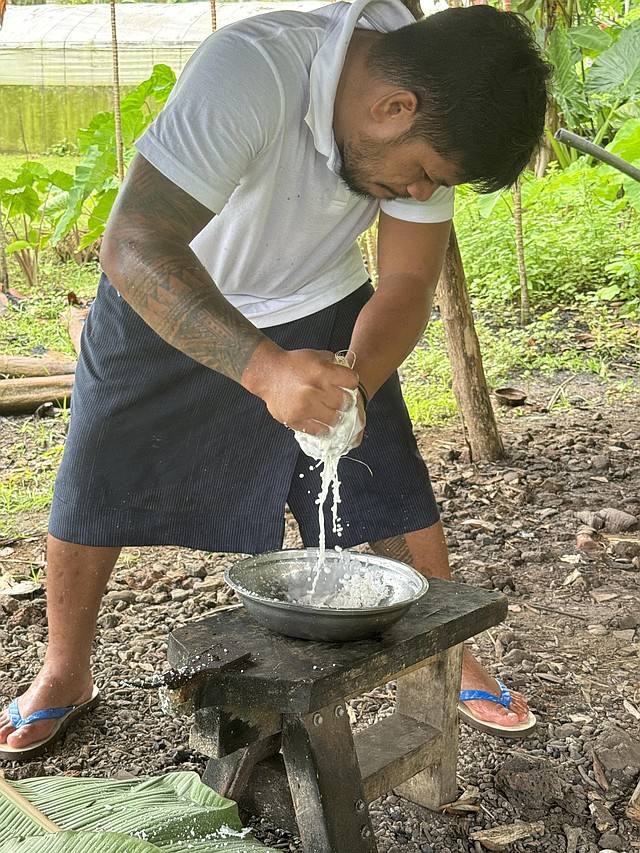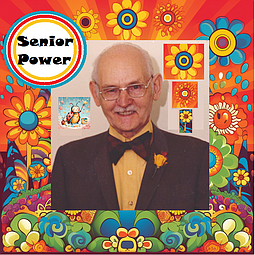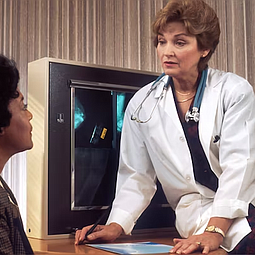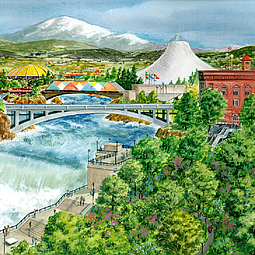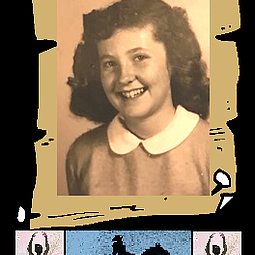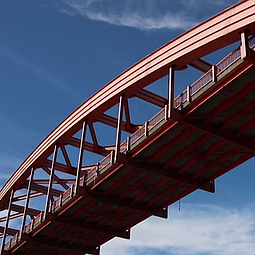It takes much effort and time to get to Samoa, as this small, Polynesian island country is situated in the central South Pacific Ocean, halfway between New Zealand and Hawaii. It’s made up of nine volcanic islands, four of which are inhabited. The two largest islands, Savai’i and Upolu, comprise 99% of the nation’s total land area. Though Savai’i has the most land, Upolu has the most people because it’s the commercial center and location of Samoa’s capital, Apia. The total population of the country is approximately 225,000.
Samoa means “sacred earth,” a description that reflects the inhabitants’ view towards their island nation’s environment and the need to keep it precious. This attitude is why you’ll find unspoiled natural beauty and breathtaking scenery around every corner. Along with its sublime landscape of white sand, palm tree-lined beaches, verdant rainforests and dramatic mountain terrain, Samoa is known for its genuine hospitality. You’ll be greeted with “Talofa,” and welcomed with a smile.
To get around the main island of Upolu, you can take guided tours that will pick you up from your hotel or resort, order a taxi, rent a car, or take the colorful, open air, Samoan buses that you wave down as they approach. My husband and I rented a car, as we wanted the freedom to explore on our own. We were naturally aware that in Samoa you drive on the left side of the road, but we didn’t realize that the roads were very narrow and often rutted with potholes, or in some cases, under construction. We also didn’t know that we would be sharing these roads with all manner of creatures, like dogs, feral pigs and piglets…and people, as there are no sidewalks.
While driving around the island, you’ll note that other than Apia, there are no cities, just villages, one after another. They’re marked with signs and often the roadsides are lined with containers full of eye-catching floral arrangements. In some cases, the route is lined with Samoan flags.Churches abound in each village, of all shapes and sizes and denominations. The church is central to the Samoan way of life and today, most Samoans identify as Christian and attend church services at least once a week. Sundays are observed as a national day of rest. In certain villages, the people observe a compulsory evening prayer curfew called Sa, or sacred, signified by a bell or blowing of a conch shell.
A single village can have several chiefs, which are leaders of extended families and represent these families on the village council. This local governing body plays a significant role in the operation of the village. The Samoan word for chief is matai and it is an honor to have this title bestowed upon you, but it also comes with duty and responsibility.
Along with faith, family is an integral component of life for Samoans. Parents, children and married children all live together in one compound area comprised of separate houses. Each compound often has a larger structure without any walls. These serve as gathering places for the family, but can also be used for sleeping or eating.As for clothing, men and women typically wear a lavalava or sarong. You may also see females wearing a puletasi or two-piece outfit of a skirt and top, when attending church or a formal occasion.
As a visitor to this tropical island paradise, you’ll find much to do, that is if you can motivate yourself to leave your comfy beach chair! Nature lovers will enjoy the tropical flora and the waterfalls, as well as the coral reefs teeming with colorful fish, sea turtles and rays. Take a hike along the coast or through the forest, get your waterfall fix or go snorkeling for an up close and personal interaction with the sea life.
Many call Samoa the land of the waterfalls. Some thunder down off of towering cliffs, while others are more sedate cascades flowing over smooth rocks. On Upolu, a few of the falls like Togitogiga make good swimming spots and with Samoa’s warm, humid climate, they are popular places for the locals to cool off. Sopoaga and Papapapaitai Falls are also picturesque, but mostly viewed from the road. Another, Fuipisia Falls, is actually two cascades that plunge into a gorge for an impressive drop.For some of the prime snorkeling destinations, you’ll need to book an organized boat trip. I was content, however, with finding plenty of vivid-hued fish while snorkeling off the beach next to my resort.
One of the most beautiful natural locales on the island is the To Sua Ocean Trench. Essentially, it’s two giant sinkholes connected by a lava tube, one without water, the other a deep swimming hole with clear, azure-blue water. To get into the water, you need to descend a steep, wooden ladder, then jump into the pool. It’s not for the faint-hearted, but you’ll be well-rewarded for your bravery once you’re in the refreshing water.
Nearby the trench are picturesque rock pools at the edge of the ocean. The wave action is fun to watch – just mind the powerful spray.
You might be surprised to find that another of Samoa’s top attractions on Upolu is the Robert Louis Stevenson Museum. The famed Scottish author resided in Samoa the last five years of his life in a lovely plantation home that he built called Villa Vailima. It’s located directly below his burial site on Mt. Vaca, which you can also visit.
Stevenson is remarkable for the number of works he produced in his twenty-year literary career -from novels and short stories to essays, poetry, plays and travel writing. He is best known for his novels, “Treasure Island,” “Kidnapped” and “Strange Case of Dr. Jekyll and Mr. Hyde,” as well as for “A Child’s Garden of Verses,” a beloved book of poems for children.Stevenson’s sense of adventure and love of travel brought him to the South Pacific, but it was also his medical condition, which is surmised to have been undiagnosed TB, that caused him to seek out warm locales in the hopes of finding some relief. In Samoa, he continued to write and also became an advocate for the Samoans, who named him “Tusitala,” teller of tales.
After he died in 1894, the house changed hands over the next century, and it wasn’t until 100 years later that it opened as a museum due to the efforts of two American businessmen, Jim Winegar and Tilafaiga Rex Maughan. It has since become a mecca for Stevenson aficionados and other tourists and is recognized as an institution in Samoa.
There are several rooms to see at this house museum, including Stevenson’s bedroom, now a library, and those of his wife, her daughter and daughter’s son. There’s also a room full of photos, paintings and sculpture. Although you can do a self-guided tour of this house museum, you’ll learn so much more on a guided experience. Our guide was very informative and her narrative was detailed and clearly told from the heart. She ended the tour by singing words of the late author.
Samoa has a rich cultural heritage with age-old traditions. Make sure you visit the Samoa Cultural Village in Apia for an immersive cultural experience. In addition to traditional music and dance performances, you’ll observe wood carving, the art of traditional tattooing and Umu (earth oven) preparation, all within an interactive environment.
Umu prep involves piling and packing layers of volcanic rocks together, then lighting them up and letting them get red hot. In the meantime, the food is organized, including proteins like chicken, pork or seafood, taro, breadfruit and bananas. These items are wrapped in coconut and banana leaves.
Then it’s time to load the Umu, which involves removing the top layer of volcanic rocks, placing the packages of food on the lower layer and then replacing the hot rocks on top. The whole thing is covered with banana leaves to seal in the heat and cook the food. It can take up to an hour for the cooking process.
As for wood carving, you’ll learn that the methods and designs used by Samoans are passed down by their ancestors. Pieces are carved by hand, with no machines used in any part of the process. As we watched several men sitting on the ground chipping away at blocks of wood, we learned that it can take up to two weeks to create one item. It’s a labor of love for these artisans who are proud of their heritage and continue to keep it alive. Finished products – handsome works of art – including bowls, plates, decorative Samoan weapons and more, were displayed on a table and available for sale.
Nearby, in the “House of Pain,” were two master tattooists at work. This art form is very sacred to the Samoan people and on Upolu, there are two families who are the tattooists for the island. To become a master tattoo artist, you need to train for many years. Once you reach this level, you hold a position of honor in Samoan society and many people look to you to receive a tattoo as a rite of passage.
To enter the “House of Pain,” we needed to show proper respect, by removing our shoes, hats and sunglasses, putting away our cameras and sitting quietly on the mats. As we watched, our guide explained the process. The tattooing is done using traditional tapping tools, typically made of stainless steel tips. It’s carried out in the absence of anesthesia and is painful, as you can imagine. Just the sounds of the tapping made me uncomfortable.
Two men assisted each of the master tattooists by holding the client’s body still. Another man sat nearby. We learned that a family member accompanies the individual for support. Some Samoan men have traditional tattoos on their lower torso and upper legs, which is considered a full body tattoo. It takes several weeks, 4-5 hours a day, to accomplish this feat.
At the end of the various presentations, everyone gets to eat a Samoan meal, comprising fish, taro, banana and breadfruit, that was cooked in the Umu. It’s served in a basket woven with coconut fronds. And yes, you get to weave your own basket. Thankfully, assistance is provided as without it, mine would not have been able to hold any food!Being part of a fiafia night celebration is another fun cultural experience. Fiafia is a term Samoans use for a celebration or get-together. Many hotels and resorts have their own weekly fiafia nights. I attended one at the Return to Paradise Resort.
After feasting on a buffet of delicious traditional foods, you’ll be treated to an entertaining show of traditional dance. The performers at the Return to Paradise Resort were actually all employees of the property, who doubled as talented dancers. Women and men in traditional garb danced separately and together to lively Samoan music.
The highlight of the night was the fire knife dance, an ancient Polynesian art. We watched as several men and boys twirled fire knives, resembling batons, around their necks, through their legs, under their arms and over their bodies to the beat of the music. It was a mesmerizing and exciting display of coordination and agility.
During my stay on Upolu, I made the Sinalei Reef Resort & Spa homebase. This lovely boutique property is nestled within a sheltered lagoon along the southern coast of the island. The backdrop is idyllic with a white sandy beach and turquoise-hued ocean just steps away, while tropical flowers and plants create a lush, landscaped environment.
Accommodations range from beachfront villas to ocean or garden view, casita-like houses. Amenities include an infinity pool, spa, tennis court, bar, restaurant and a weekly program of cultural activities. I enjoyed watching how coconut cream is made, then getting to taste the delectable stuff! Coconut is truly the plant of life for Samoans.
This peaceful and serene property was the perfect spot to unwind and embrace Samoa’s leisurely pace of life.www.samoa.travel
www.sinalei.com
Debbie Stone is an established travel writer and columnist, who crosses the globe in search of unique destinations and experiences to share with her readers and listeners. She’s an avid explorer who welcomes new opportunities to increase awareness and enthusiasm for places, culture, food, history, nature, outdoor adventure, wellness and more. Her travels have taken her to nearly 100 countries spanning all seven continents, and her stories appear in numerous print and digital publications.

